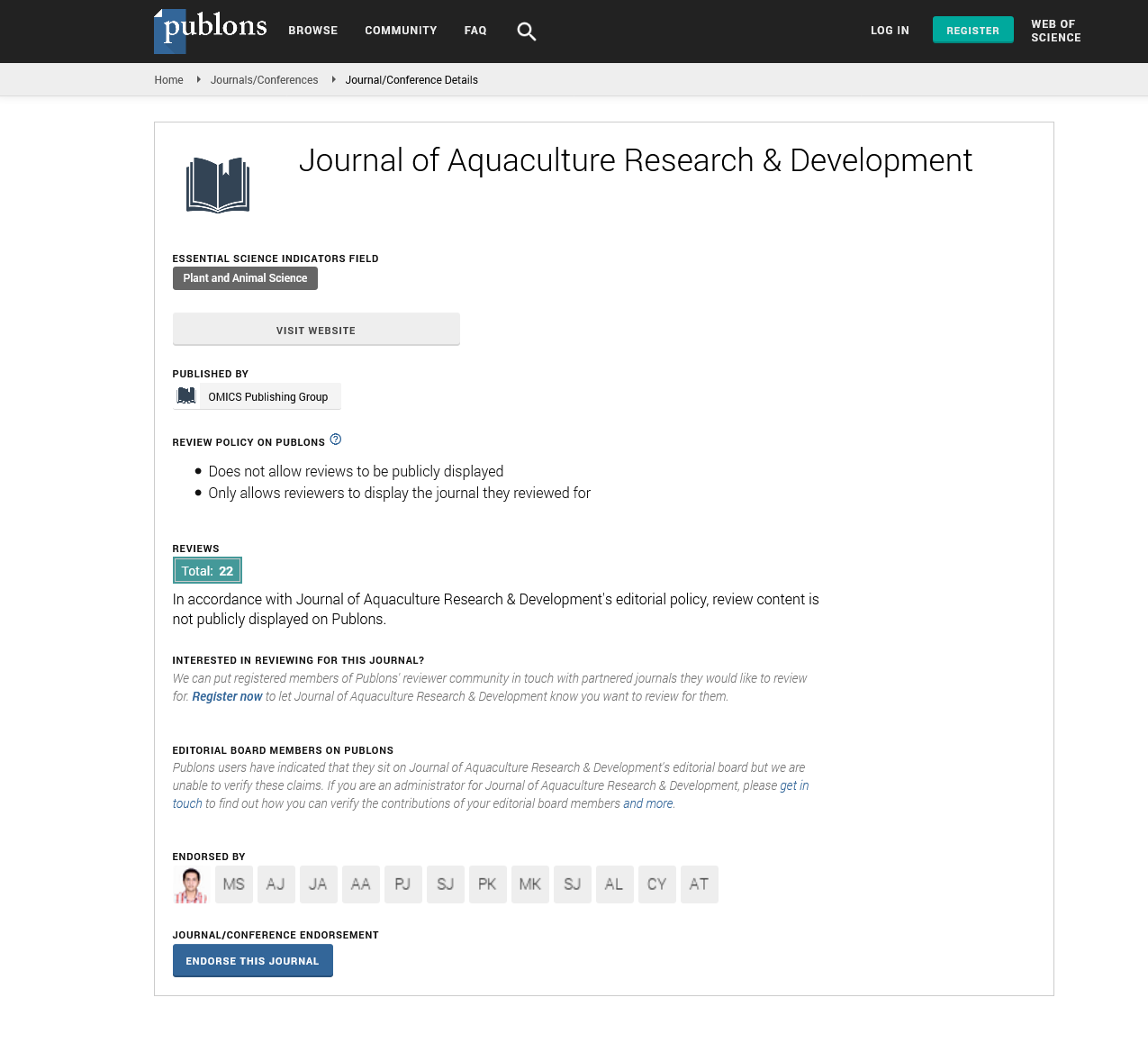Indexed In
- Online Access to Research in the Environment (OARE)
- Open J Gate
- Genamics JournalSeek
- JournalTOCs
- Scimago
- Ulrich's Periodicals Directory
- Access to Global Online Research in Agriculture (AGORA)
- Electronic Journals Library
- Centre for Agriculture and Biosciences International (CABI)
- RefSeek
- Directory of Research Journal Indexing (DRJI)
- Hamdard University
- EBSCO A-Z
- OCLC- WorldCat
- Scholarsteer
- SWB online catalog
- Virtual Library of Biology (vifabio)
- Publons
- MIAR
- University Grants Commission
- Euro Pub
- Google Scholar
Useful Links
Share This Page
Journal Flyer

Open Access Journals
- Agri and Aquaculture
- Biochemistry
- Bioinformatics & Systems Biology
- Business & Management
- Chemistry
- Clinical Sciences
- Engineering
- Food & Nutrition
- General Science
- Genetics & Molecular Biology
- Immunology & Microbiology
- Medical Sciences
- Neuroscience & Psychology
- Nursing & Health Care
- Pharmaceutical Sciences
Perspective - (2025) Volume 16, Issue 1
Improving Aquaculture Productivity with NB-IoT Water Quality Systems
James Tidal*Received: 01-Jan-2025, Manuscript No. JARD-25-28647; Editor assigned: 03-Jan-2025, Pre QC No. JARD-25-28647 (PQ); Reviewed: 17-Jan-2025, QC No. JARD-25-28647; Revised: 24-Jan-2025, Manuscript No. JARD-25-28647 (R); Published: 31-Jan-2025, DOI: 10.35248/2155-9546.25.16.954
Description
The advancement of aquaculture has brought significant improvements in food production, but it has also introduced challenges related to water quality management. Maintaining optimal water conditions is essential for fish health, growth and overall aquaculture productivity. Traditional water quality monitoring methods, which often depend on manual sampling and laboratory analysis, are time-consuming and lack real-time capabilities. In recent years, Narrowband Internet of Things (NBIoT) technology has emerged as a game-changer, enabling the design of real-time, remote and efficient water quality monitoring systems for aquaculture ponds. This perspective article highlights the potential of NB-IoT-based systems in transforming aquaculture operations through enhanced water quality management, improved efficiency and sustainable production.
NB-IoT is a Low-Power Wide-Area Network (LPWAN) technology designed for massive machine-type communication. It offers several advantages, including low power consumption, extended coverage and the ability to support a large number of connected devices. These characteristics make it an ideal solution for aquaculture water quality monitoring, where realtime data collection and continuous surveillance are essential. Unlike traditional wireless technologies, NB-IoT provides stable connectivity even in remote or rural aquaculture farms, ensuring reliable data transmission over long distances.
The design of an NB-IoT-based water quality monitoring system typically involves a combination of sensor nodes, communication modules and a cloud-based data management platform. The sensor nodes are deployed in the aquaculture ponds to measure key water quality parameters, including temperature, Dissolved Oxygen (DO), pH, ammonia, turbidity and salinity. These sensors are connected to NB-IoT communication modules, which transmit the data to a cloud server. The cloud platform then processes, stores and visualizes the data, allowing aquaculture farmers to monitor pond conditions in real time via web or mobile applications.
One of the key benefits of NB-IoT-based monitoring systems is their ability to provide continuous and automated water quality surveillance. In aquaculture, water quality fluctuations can occur rapidly and unpredictably, posing risks to fish health and productivity. For example, a sudden drop in dissolved oxygen levels can lead to fish stress or mortality. With NB-IoT, farmers receive instant alerts when water quality parameters deviate from the optimal range, enabling prompt corrective actions such as aeration adjustments or water exchange. This real-time responsiveness reduces the likelihood of fish losses and improves overall pond management efficiency.
Furthermore, the deployment of NB-IoT-based monitoring systems enhances data accuracy and reliability. Manual water quality testing is prone to human error and inconsistencies, whereas automated sensor-based systems provide continuous, standardized measurements. The high-frequency data collection provided by NB-IoT also enables the detection of subtle trends and patterns, allowing farmers to optimize feeding schedules, adjust water treatment protocols and implement preventive measures against waterborne diseases. This data-driven approach promotes more informed and proactive decision-making in aquaculture operations.
In addition to improving water quality management, NB-IoTbased systems contribute to cost efficiency and sustainability. By reducing the need for frequent manual sampling and laboratory analysis, aquaculture farms can lower operational costs. The low power consumption of NB-IoT devices ensures extended battery life, minimizing maintenance requirements and reducing energy expenses. Additionally, by preventing water quality deterioration, these systems promote healthier fish stocks, reducing mortality rates and minimizing the use of antibiotics or chemical treatments, which aligns with sustainable aquaculture practices.
The scalability and flexibility of NB-IoT technology also make it suitable for large-scale aquaculture operations and integrated multi-pond systems. Multiple sensor nodes can be deployed across different ponds, with data aggregated on a centralized platform. This allows farm managers to monitor and compare water quality parameters across multiple locations, enhancing overall farm management efficiency. Furthermore, the cloudbased architecture enables remote access to data, allowing aquaculture operators to oversee their facilities from any location, which is particularly valuable for large or geographically dispersed farms.
Citation: Tidal J (2025). Improving Aquaculture Productivity with NB-IoT Water Quality Systems. J Aquac Res Dev. 16:954.
Copyright: © 2025 Tidal J. This is an open access article distributed under the terms of the Creative Commons Attribution License, which permits unrestricted use, distribution, and reproduction in any medium, provided the original author and source are credited.

